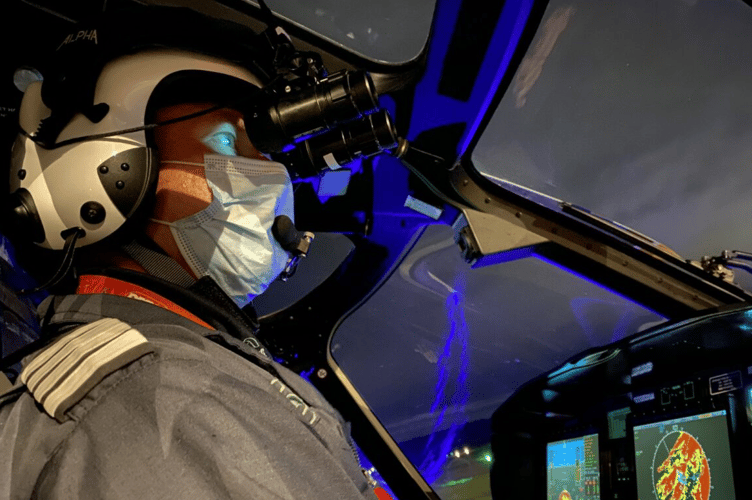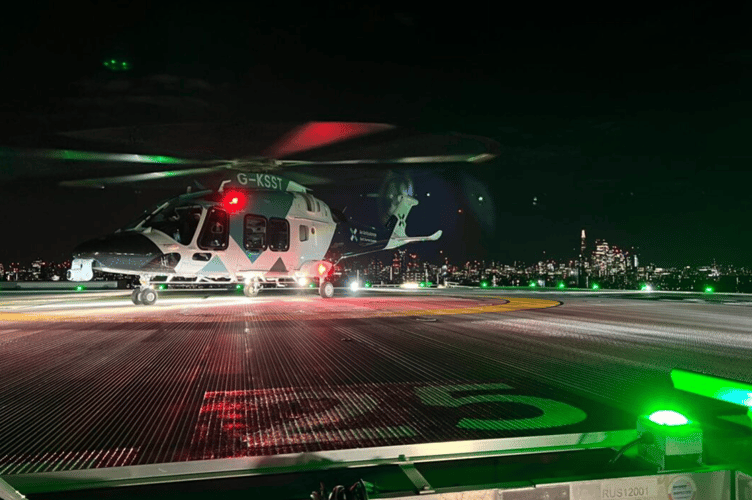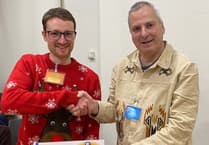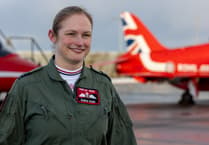Surrey's air ambulance has celebrated a decade of night flying.
Air Ambulance Charity Kent Surrey Sussex (KSS) marked the tenth anniversary of becoming the first air ambulance charity in the country to fly 24/7, 365 days a year last Friday.
On September 29, 2013, a KSS team flew its first night mission to treat a patient involved in a road traffic collision near Canterbury and accompany them to hospital.
Since then, KSS has carried out 4,106 missions by helicopter at night, treating 2,355 patients and flying for 2,000 hours.
In that time KSS aircraft have flown approximately a quarter of a million miles at night, equivalent to flying around the Earth 11 times or travelling to the Moon.

Professor Richard Lyon MBE, KSS Executive Director of Research and Innovation, and Deputy Medical Director, said: "Accidents don’t stop happening when the sun sets. In fact, some of our most serious incidents occur in the hours of darkness. In 2012, we undertook an innovative simulation study that suggested that patients across our region could benefit from our life-saving medical intervention every night.
"Based on this result, we became the first air ambulance charity in the UK to fly 24/7, 365 days a year, using the most advanced systems at the time with a new state of the art helicopter, two pilots and the entire medical crew using night vision goggles. This allowed us to deliver the same quality of rapid critical care by air to all of our KSS patients, regardless of the time of day.
"I’m immensely proud to have led this initial research, been one of the first doctors to fly at night and still be with KSS today continuing to see on a daily basis that lives are being saved, 24 hours a day, all thanks to our ability to night fly and to the generosity of our fantastic and loyal supporters.”
Night Flying Facts
KSS pilots and clinical teams use military-grade night vision goggles when operating at night.
Flying at night is more complex and requires additional time for flight planning. KSS aims to be airborne in no more than 15 minutes at night, compared to within five minutes during the day.
Google Earth is used to help select landing sites, as well as specialist mapping systems which show where hazards such as overhead wires or covered reservoirs are located.
There are more than 180 sites known to KSS that are safe for it to use, covering most towns and villages in Kent, Surrey and Sussex. KSS looks for sites that are as big as possible, with a minimal slope, good surface and good access in and out to enable the crew to bring a patient back safely to the aircraft.
At night KSS uses a powerful white light underneath the aircraft to illuminate the landing site as it approaches to ensure it is clear and safe to land.
At night the helicopter needs a landing site that is twice as large as by day because depth perception is poorer at night and this gives KSS a larger safety margin.
Nick Bramley, Chief Pilot at KSS, said: “Flying at night is more challenging than flying by day. Vision and depth perception are both reduced and it requires a lot more concentration because everything is different. It’s a subtle difference, just as driving a car by night feels different.
“There are two aspects to night flying at KSS. The first is conventional flying but at night, which requires more concentration. That’s the type of flying we do when flying into a hospital or major trauma centre.
“When we are out flying to a patient we use night vision goggles and the night vision instrumentation system (NVIS). That’s much more challenging and something that most pilots would not experience in their career. It’s unique to the military, air ambulances and the police.
“When pilots join KSS they go through a NVIS course, so they join us fully qualified to fly day or night. They then undergo intensive training over several months to develop those skills.”

David Wright, HEMS Paramedic and Operational Support Director at KSS, was part of the first crew to attend a patient at night by helicopter.
David recalled: “Without doubt, we were able to be with the patient and deliver our life-saving care more quickly by air. Looking back, it’s nice to have been part of the team that delivered this innovation.”
“Previously there were patients that could not receive such a swift response from our service at night using our response vehicles, due to the geography of our region. To have a system that meant we could deliver the same service regardless of the time of day was great step forward.”
KSS continues to take pride in its world-leading reputation for research and innovation which ensures it can continue to provide the very best possible care for patients and communities. It can only do this thanks to the generosity of loyal supporters.

.jpeg?width=209&height=140&crop=209:145,smart&quality=75)



Comments
This article has no comments yet. Be the first to leave a comment.